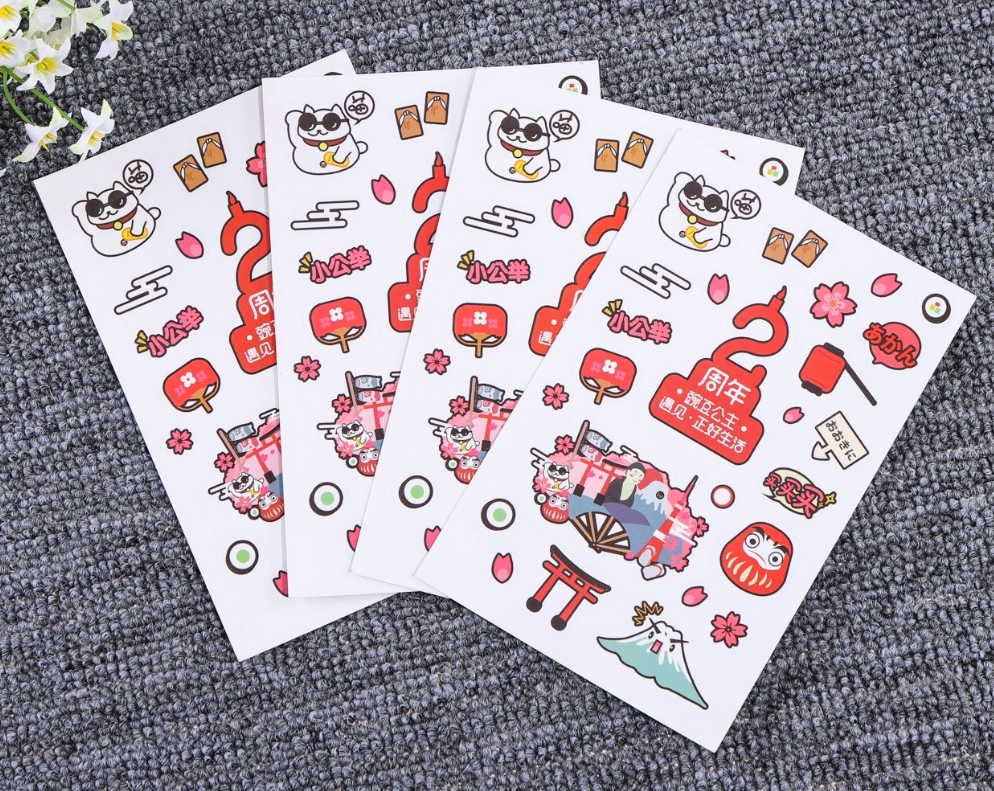The current printing method for self-adhesive stickers is primarily letterpress printing, with sheet-fed offset printing also accounting for a corresponding proportion. Printing methods such as flexographic printing occupy a smaller share. The key lies in the printability of the adhesive labels themselves. Flexographic or gravure printing are undoubtedly the most traditional printing methods. Therefore, label printing factories that already have flexographic printing machines can generally print self-adhesive labels and thin film labels. It is also possible to use the most primitive printing methods, such as letterpress, offset printing, or screen printing, for basic self-adhesive printing. Can printing companies convert their printed products without replacing specialized equipment?

1、 Automatic printing of adhesive stickers using letterpress printing. Printing plate making is a photosensitive resin relief plate. The printed labels have the advantage of using full-color ink. However, there is a significant difference in the level of specialized equipment for relief printing, and some still use circular flat relief printing machines. Some applications use general rotary relief printing machines, while others use specialized slant back, satellite or unit type adhesive sticker printers, so they cannot be compared during the transition period.
2、 Offset printing is the basic way of printing stickers in label printing factories in China. Offset printing has the characteristics of beautiful and elegant graphics, rich and colorful layers, and is more suitable for mass production printing. Moreover, this printing machinery equipment can be used for multiple machines and is suitable for the characteristics of China’s label sticking market. However, single sheet offset printing is not suitable for films with non absorbent printing surfaces, as film label stickers are mostly printed roll to roll and require volatile dry ink. Offset printing can also print thicker plastic materials, such as in mold label stickers, label stickers, but the machine equipment must be equipped with UV curing specialized equipment, which requires a large amount of cost.
3、 The quality of flexographic printing is currently not inferior to that of offset printing, and even has its unique function. The advantages of this type of printing process are simple mechanical system, low cost, comparable printing quality to offset printing and gravure printing, and the advantage of thicker ink layer compared to offset printing products. Flexographic printing uses offset printing ink and UV ink, both of which do not cause environmental pollution. However, due to the flexibility of flexographic printing plate making, color reproducibility differs between gravure printing and general relief printing. The increase in highlights to half color dots in flexographic printing is very large, resulting in low contrast in printing, and high-level layers are prone to abnormalities. When marking, in order to better compensate for layer defects, FM points can also be applied in the highlights, and dark modulation or medium range AM modulation and shielding can also be applied to ensure quality.
4、 Gravure printing uses a short ink ink supply system for ink supply, while roll paper printing has a high degree of automation technology. Solvent based ink and rapid drying of the ink layer are the preferred choices for thin film printing. Generally, gravure printing machines have a high speed, and many of them are equipped with cylindrical die-cutting equipment at the back end. This equipment can also perform die-cutting and indentation, and is suitable for printing various label stickers. However, due to the long plate making cycle and relatively high plate making cost, gravure printing is only suitable for mass production of label stickers.
5、 Screen printing is the most universal printing method for sheet metal. At present, many screen printing factories use inexpensive screen printing equipment to shrink the printing of self-adhesive labels and film labels. The characteristics of screen printed label stickers are light ink and strong three-dimensional effect. Thin film products can also be printed with UV ink. Except for a few rotary screen printing equipment with roll to roll adhesive printing capabilities, the vast majority of screen printing equipment are semi-automatic flat screen printing machines that can only print individual products and have low overlay precision. Not very suitable for supporting production lines. Film label production equipment. In the process of business transformation in post press processing technology, it is also necessary to pay attention to the corresponding changes in label pasting and post press processing. For example, when printing self-adhesive label stickers, the post-processing of the label stickers is divided into sheet processing and roll processing according to the application form of the label stickers.
